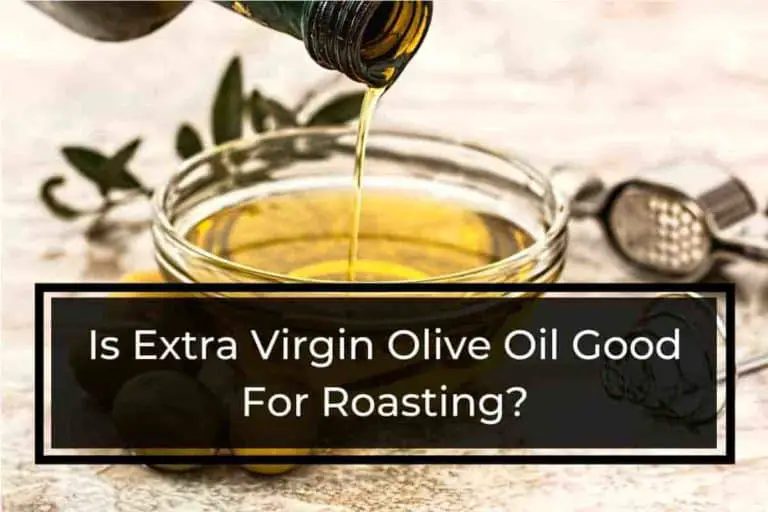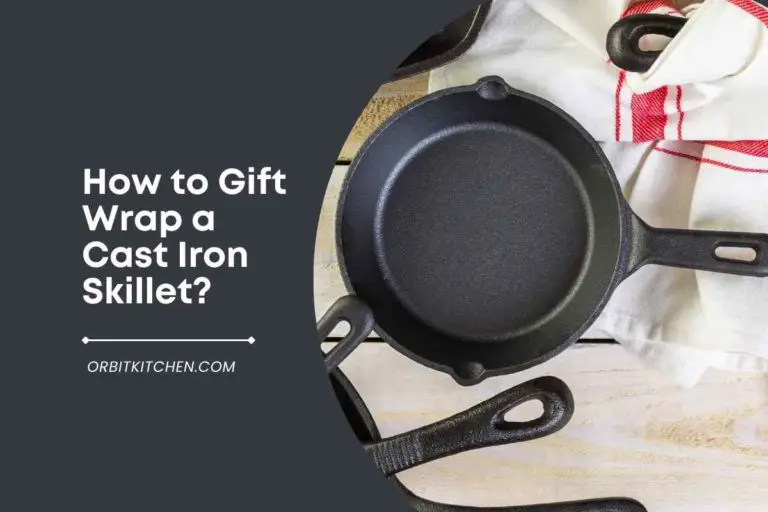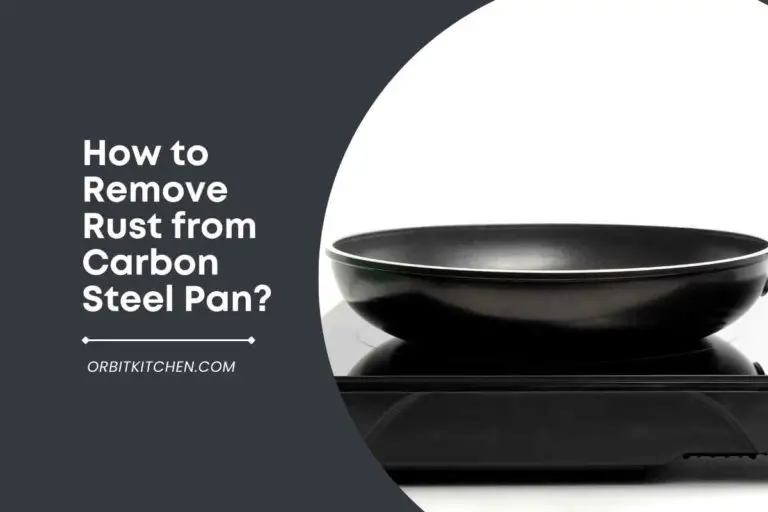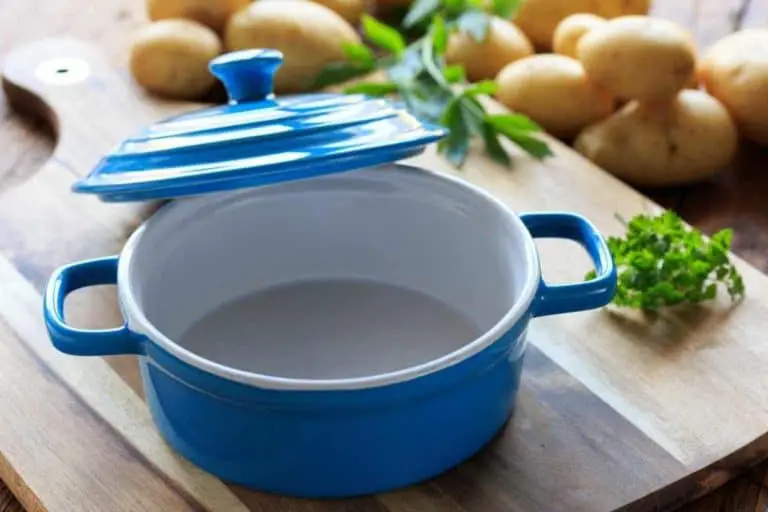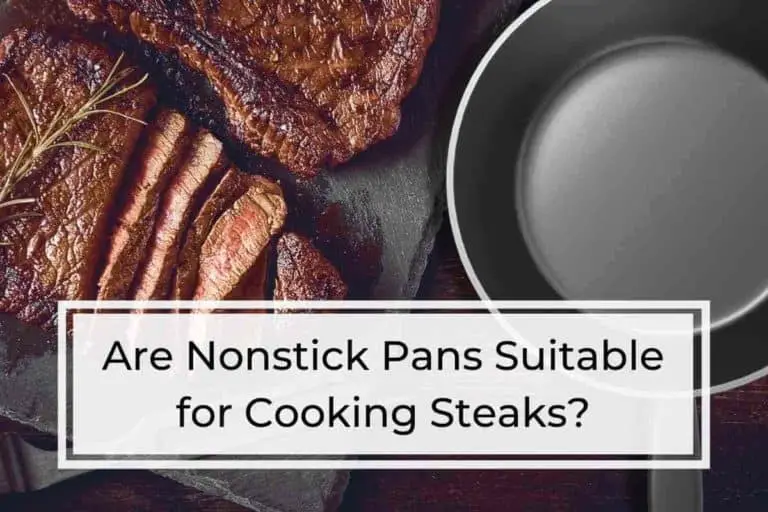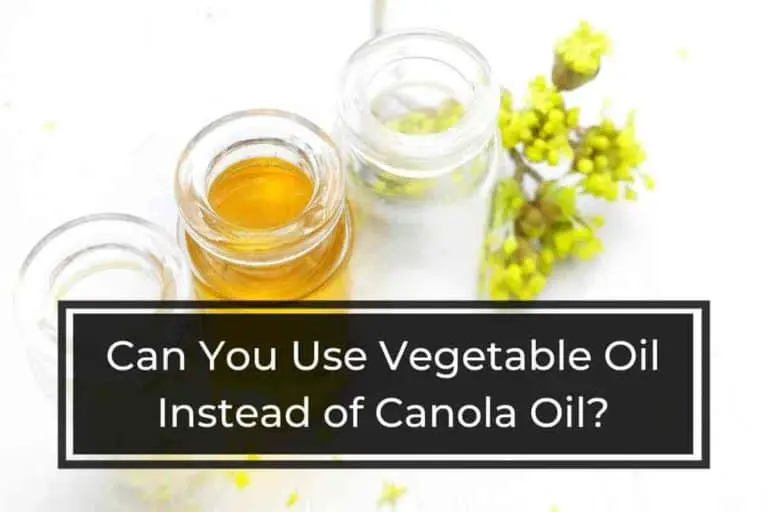Can You Use Extra-Virgin Olive Oil in Ceramic Pans?
We all know that extra-virgin olive oil is healthy when used in salads and topping food, but what about our ceramic cooking pans? Are they safe to use olive oil in?
Extra-virgin olive oil should not be used when cooking in ceramic pans, as it can leave a thin carbonized layer on the ceramic pan. This happens because the oil can’t withstand high temperatures and starts to break down. This layer can dull the pan’s natural non-stick properties.
Most ceramic pans are covered with a protective coating that is meant to protect the pan from the heat of the oven. Therefore, using extra-virgin olive oil on top of the protective layer is not recommended as it will crack or flake off when heated.
The main purpose of this guide is to help you find out if you can use olive oil in ceramic pans. If you are looking for some of the best ceramic pans, you should check out our buying guide for the best ceramic frying pans.
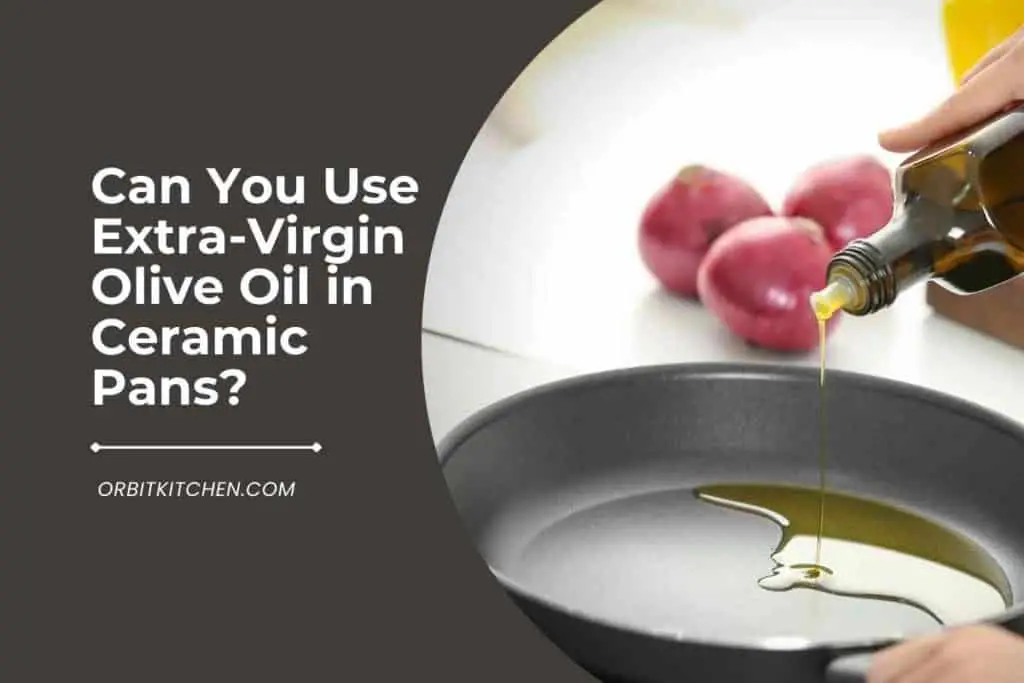
What is Extra-Virgin Olive Oil?
Extra Virgin Olive Oil or EVOO is the first pressing from the fruit of the olive and is a premium oil. It has a superior taste to other oils. Its color ranges from golden to blackish.
Extra-virgin olive oil is the most expensive grade of olive oil. It is distinguished by being made only from the first pressing of olives and typically using only the first pressing of the year’s harvest. This ensures it is free from any impurities in the second and third pressings.
It is the least processed of the olive oils. It retains all the flavor and nutrition of the original olives without any of the additives or chemicals typically found in other types of olive oil. It is the best choice for cooking salads and drizzling on bread.
How Does It Impact Your Cooking?
Extra-virgin olive oil has a low acidity rating. It has a mild taste and has a low smoke point temperature. As a result, extra-virgin olive oil is best for cooking at low heat and dressing salads and vegetables. It’s the most versatile oil for making vinaigrettes and dressings.
Extra-virgin olive oil is rich in polyphenols, vitamins, and antioxidants and contains essential fatty acids. It is considered a healthy cooking oil and is often used in place of other vegetable oils, especially if your recipe calls for a bland, non-flavored oil.
You can use it for cooking just about anything; just don’t use extra-virgin olive oil to fry foods since the high heat damages its delicate flavor.
Other Types of Olive Oil
There are four basic types of olive oil:
- Extra virgin olive oil: It is the highest quality, and most expensive type, is produced from olives picked at the peak of ripeness.
- Virgin Olive Oil: It can be used in cooking or as a dressing. It has been produced without any chemicals or heat.
- Pure Olive Oil: It is lower-quality olive oil that has been refined, deodorized, and often hydrogenated. The extraction process of olive oil involves the pressing of the olives to remove their flesh and leave only the pulp of the olive.
- Refined Olive Oil: It is a refined version of extra virgin olive oil. It’s made by using chemical solvents such as hexane, ethyl acetate, and propane gas to remove impurities from olive oil.
Pros and Cons of Using Extra-Virgin Olive Oil in Ceramic Pans
The pros and cons of using extra-virgin olive oil in ceramic pots are as follows:
Pros:
The advantages of extra-virgin olive oil in ceramic pans are:
- Extra-Virgin Olive oil is a natural preservative.
- It has a rich flavor that does not interfere with the flavors of other foods, such as meats and fish.
- It is very stable, making it perfect for cooking or baking.
- The oil can be added directly to the hot pan and is compatible with heat because it can withstand up to 410 degrees Fahrenheit.
- It does not require high heat to be released, so it is not likely to smoke or burn.
- The oil also won’t affect the dish’s taste, and it is inexpensive.
Cons:
- It can leave a thin carbonized layer on the ceramic pan.
- This can dull the pan’s natural non-stick properties.
What Oil to Use in Ceramic Pans?
The type of oil you use in a ceramic pan is determined by the food you cook. If you cook chicken, you will use olive oil, butter, or shortening, but if you cook beef, vegetables, pasta, or rice, you will use vegetable oil. You can even use olive oil or coconut oil for cooking eggs, bread, or desserts.
While there are some ceramic pans out there that are specifically marketed to cook foods with oil, the majority of ceramic pans are coated with a glaze that will keep them nonstick. If you want to avoid sticking issues, use a nonstick surface.
Conclusion
Extra-virgin olive oil has become increasingly popular as an alternative to canola and other vegetable oils. Because olive oil contains healthy fats, it is often referred to as “heart-healthy oil.”
Extra-virgin olive oil has a smoke point between 350 and 410 degrees Fahrenheit. You should not heat it above 410 degrees Fahrenheit because its high temperature will destroy its nutrients.

